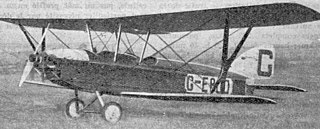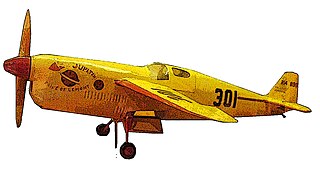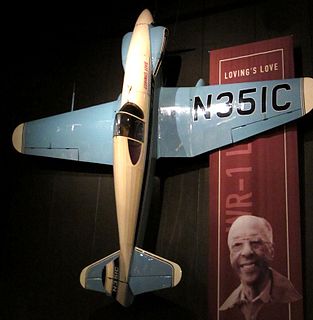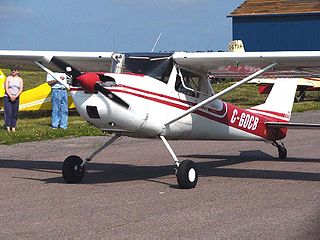
The Bristol Scout was a single-seat rotary-engined biplane originally designed as a racing aircraft. Like similar fast, light aircraft of the period it was used by the RNAS and the RFC as a "scout", or fast reconnaissance type. It was one of the first single-seaters to be used as a fighter aircraft, although it was not possible to fit it with an effective forward-firing armament until the first British-designed gun synchronizers became available later in 1916, by which time the Scout was obsolescent. Single-seat fighters continued to be called "scouts" in British usage into the early 1920s.
The Short S.4 Satellite was a small British two-seater sporting monoplane, produced in 1924 to take part in the Air Ministry's Two-Seater Light Aeroplane competition on 27 September of that year.

The Bullet Monoplane or Alexander Eaglerock Bullet's design was a low wing cabin monoplane that was a departure from traditional biplane aircraft of the era.
The Bristol Type 32 Bullet was a British biplane racing aircraft. It was designed in 1919 by Frank Barnwell as a high-speed testbed for the Jupiter engine being developed in Bristol by Roy Fedden for the Cosmos Engineering company, and also to publicise the company's name by participating in air races.

The Avro 562 Avis was a two-seat light biplane designed and built by the A.V.Roe and Company Limited at Hamble for the 1924 Lympne Light Aeroplane Trials.

The Bristol Type 99 Badminton was a 1920s British single-seat racing biplane built by the Bristol Aeroplane Company and designed by F.S. Barnwell.

The Cranwell CLA.3 was a parasol winged single-engined, single-seat British aircraft built to compete in the Lympne air races of 1925. It was designed and built by an amateur group drawn from staff and pupils at the RAF College Cranwell. Though it won one prize and set a Class record, only one CLA.3 was made.

The Halton Mayfly was a British two-seat biplane designed by C.H. Latimer-Needham and built by the Halton Aero Club between 1926 and 1927. Registered G-EBOO and named the HAC.1 Mayfly it first flew on 31 January 1927. It was converted to a single-seater and was flown in a number of air races including the King's Cup Race. It was entered in the 1926 Lympne light aircraft trials as No. 8 but failed to arrive in time for the elimination trials.

The Cessna CR-3 was a follow on racing aircraft to the Cessna CR-2 that raced in the 1932 National Air Races.
The Cessna CR-2 was a mid-winged racing aircraft in the CR series of Cessna racers.
The Swee' Pea was a series of three midget aircraft racers designed by Art Chester.

The Folkerts SK-2, also known as Speed King Two, "Toots" and "Miss Detroit" was a racer built for the 1936 National Air Races

Chief Oshkosha.k.a.Buster is a homebuilt racing plane designed to compete in the 1931 American Cirrus Races.

The Folkerts SK-3 a.k.a. "Jupiter, Pride of Lemont was the third in a series of air racers developed by Clayton Folkerts.

The Howard DGA-4 a.k.a. Mike, and DGA-5 a.k.a. Ike and "Miss Chevrolet" was the next in a series of racers from Ben Howard. He built two examples, "Mike" and "Ike", each with a different landing gear design.

The Rider R-6 was the last of the Keith Rider designed racing aircraft of the 1930s.

The Loving/Wayne WR-1 Love is a single seat, midget racer built in the 1950s.
The Marquart MA-4 Lancer is a single place, homebuilt biplane.

The Miles & Atwood Special is a racing aircraft developed during the interwar period

















